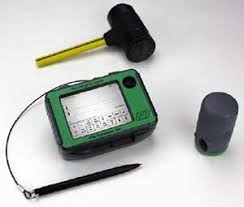Pile Integrity Testing (PIT): Purpose, Equipment, Procedure, Interpretation, and Limitations
Introduction
Pile integrity testing (PIT) is a crucial procedure used in geotechnical and structural engineering to assess the quality, integrity, and structural soundness of deep foundation piles.
This article provides a detailed overview of the purposes of PIT, the equipment used for the test, the procedure involved, the interpretation of PIT test results, and the limitations associated with this testing method.
Purposes of Pile Integrity Testing (PIT)
Detection of Defects
Quality Assurance
Estimation of Load-Bearing Capacity
Equipment for Integrity Test of Pile

Accelerometers or Geophones
Lightweight Hammer
Data Acquisition System
Pile Integrity Test Procedure
1. Instrumentation
The pile is instrumented with accelerometers or geophones, which are strategically placed at specific locations along the pile surface.
These sensors capture the stress wave reflections.
2. Impact Load
A lightweight hammer is used to strike the top of the pile.
The impact generates stress waves that propagate through the pile.
3. Signal Recording
The sensors detect the stress wave reflections caused by changes in cross-sectional area, defects, or irregularities within the pile.
The reflected signals are converted into electrical impulses and recorded using the data acquisition system.
4. Data Analysis
The recorded signals are compared to a reference signal obtained from a known defect-free section of the pile.
Differences in travel time and amplitude of the reflected waves are analyzed to identify potential defects or anomalies.
Integrity Test of Pile: Interpretation of PIT Test Result
Interpreting the results of a pile integrity test involves comparing the recorded signals with reference signals and assessing any variations in travel time or amplitude.
The interpretation may include the following considerations:
1. Wave Reflections
Any significant variations in the arrival time of reflected waves may indicate the presence of defects, such as cracks or voids, within the pile. Similarly, deviations in the amplitude of the reflected waves may suggest changes in pile integrity.
2. Signal Strength
Weaker signals or an absence of significant reflections could indicate issues like pile damage, soil inclusions, or insufficient pile-to-soil contact.
3. Comparison to Baseline
The results are compared to baseline measurements from a known defect-free section of the pile. Significant deviations from the baseline can signify potential defects or irregularities.
Integrity Test of Pile – Limitations
1. Indirect Assessment
PIT provides indirect information about the pile condition, as it relies on the analysis of stress wave reflections. Further investigation may be required to confirm any detected anomalies.
2. Detection Depth
PIT primarily focuses on the upper portion of the pile. Deeper defects may not be readily detected using this method, necessitating additional testing methods.
3. Environmental Factors
Certain environmental conditions, such as noise, nearby structures, or surface irregularities, can affect the accuracy and reliability of the test results.
4. Limited Quantification
PIT can indicate the presence of defects but does not provide quantitative measurements, such as the exact size or extent of the anomalies detected.
At Vgeotech expert, our team of experts, trained engineers, efficient testing and report team, provides you the best of services tailored for your needs and requirements. In addition, the experience, knowledge and expertise of our Chief Consultant, Dr. Abhinav Mane enables to provide reliable services with precision and accuracy. We assure you to provide appropriate test planning and execution, expert analysis and quality.

